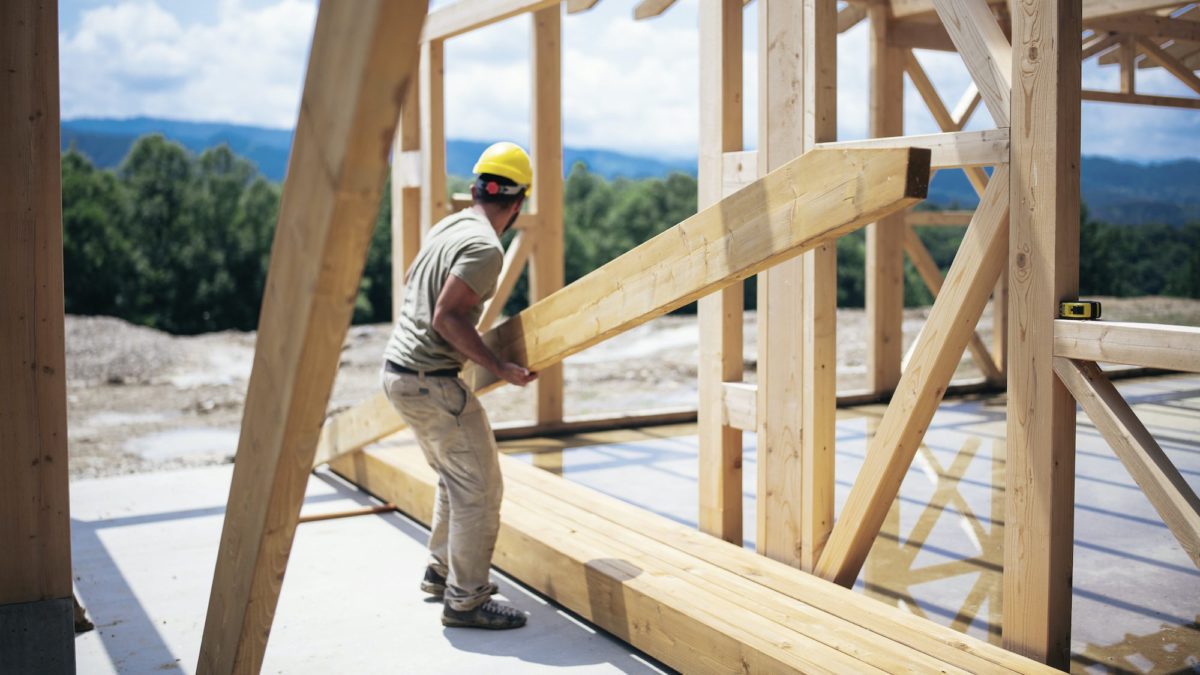
Getty Images
The numbers: U.S. home builders started construction on homes at a seasonally-adjusted annual rate of 1.58 million in January, representing a 6% decrease from the previous month’s revised figure, the U.S. Census Bureau reported Thursday. Compared with January 2020, housing starts were down roughly 2%.
The pace of building permits, however, was the highest since 2006. Permitting for new homes occurred at a seasonally-adjusted annual rate of 1.88 million, up 10.4% from December and 22.5% from a year ago.
Economists polled by MarketWatch had expected housing starts to occur at a pace of 1.66 million and building permits to come in at a pace of 1.67 million.
What happened: A slowdown in the construction of single-family homes prompted the decline in housing starts in January. Single-family starts were down 12% nationwide, whereas multifamily starts were up 16%.
Regionally, the Northeast was the only part of the country where housing starts were up on a monthly basis in January, with a 2.3% increase. The Midwest, meanwhile, saw the biggest drop in starts, with a 12% decline, followed by the West (down 11%) and South (down 2.5%).
On the permitting side of the equation, the gain in January was largely driven by an uptick in permits for new multifamily structures. The number of permits issued for buildings with five or more housing units was up 28% in January, versus a 3.8% uptick for single-family permits.
The big picture: Conditions remain largely favorable for home builders, as evidence by their improved confidence in February. Demand among home buyers remains very high, driven by millennials reaching their peak home-buying age and households looking for more space in the suburbs. That high demand continues to be met by low supply in the market for existing homes, meaning that more first-time buyers are being pushed into the market for new homes.
But there is some question as to how long demand will remain so elevated. Rubeela Farooqi, chief U.S. economist at High Frequency Economics, posed the question in a research note Thursday about whether there is “froth coming off the housing sector.” Farooqi pointed to the trend in mortgage applications data: The number of people applying for homes remains elevated but is no longer rising. And rising mortgage rates could push many buyers out of the market due to affordability challenges.
What they’re saying: “After a hot streak of construction in the latter half of last year, a modest pause should not be viewed as a slowdown in momentum. There is a lot of positive energy in the market — evidenced by intense demand to own a home — that will continue to support housing into 2021,” said Bill Banfield, executive vice president of capital markets at Rocket Mortgage.
“While builders have made significant progress in the winter months, more is needed to narrow the gap between supply and demand,” said Odeta Kushi, deputy chief economist at title insurer First American Financial Corp.
“The big question is whether builders can navigate the opportunities of favorable demographics and mortgage rates against the challenges of rising materials, labor and land costs. For housing, new construction is the answer to the current supply constraints and affordability crisis,” said George Ratiu, senior economist at Realtor.com.
The post New-Home Construction Falls as Builders Struggle With Freezing Temperatures, Rising COVID-19 Cases appeared first on Real Estate News & Insights | realtor.com®.
